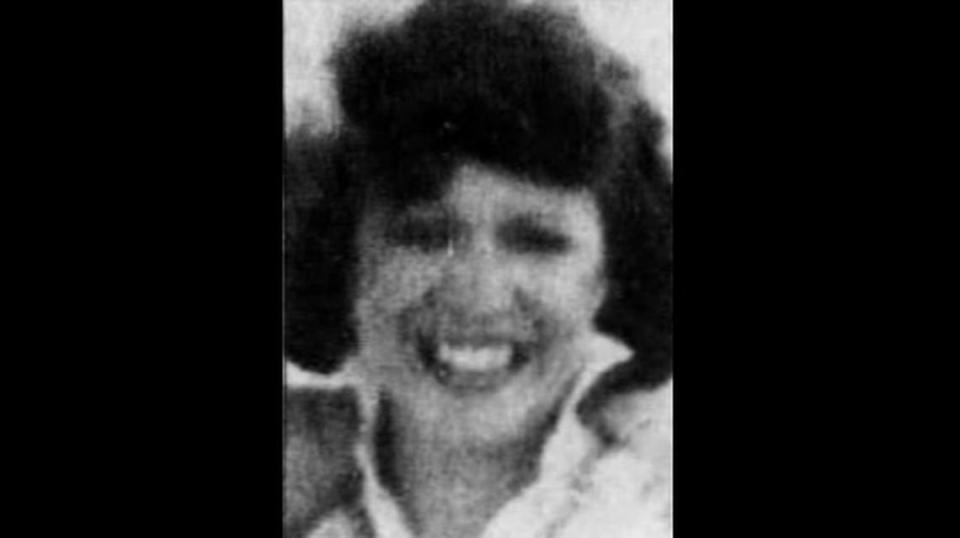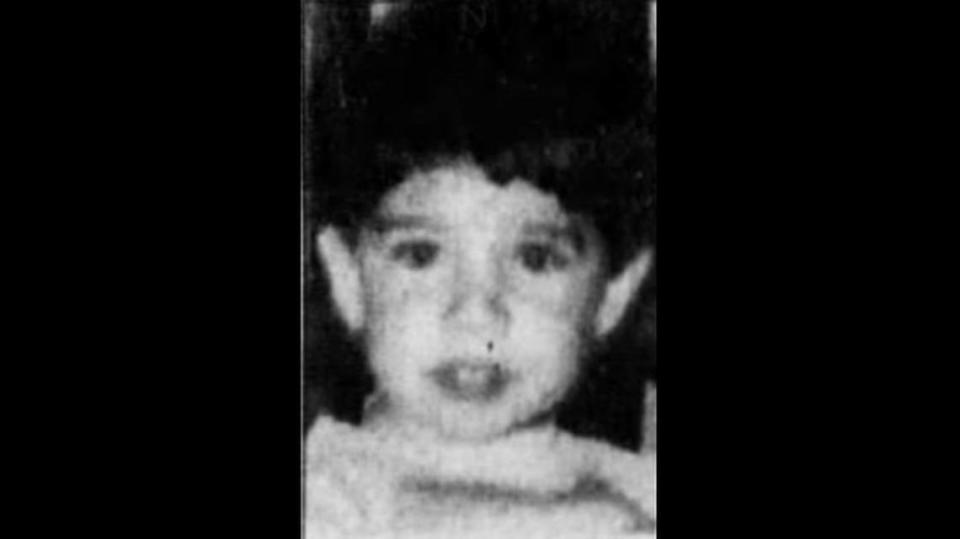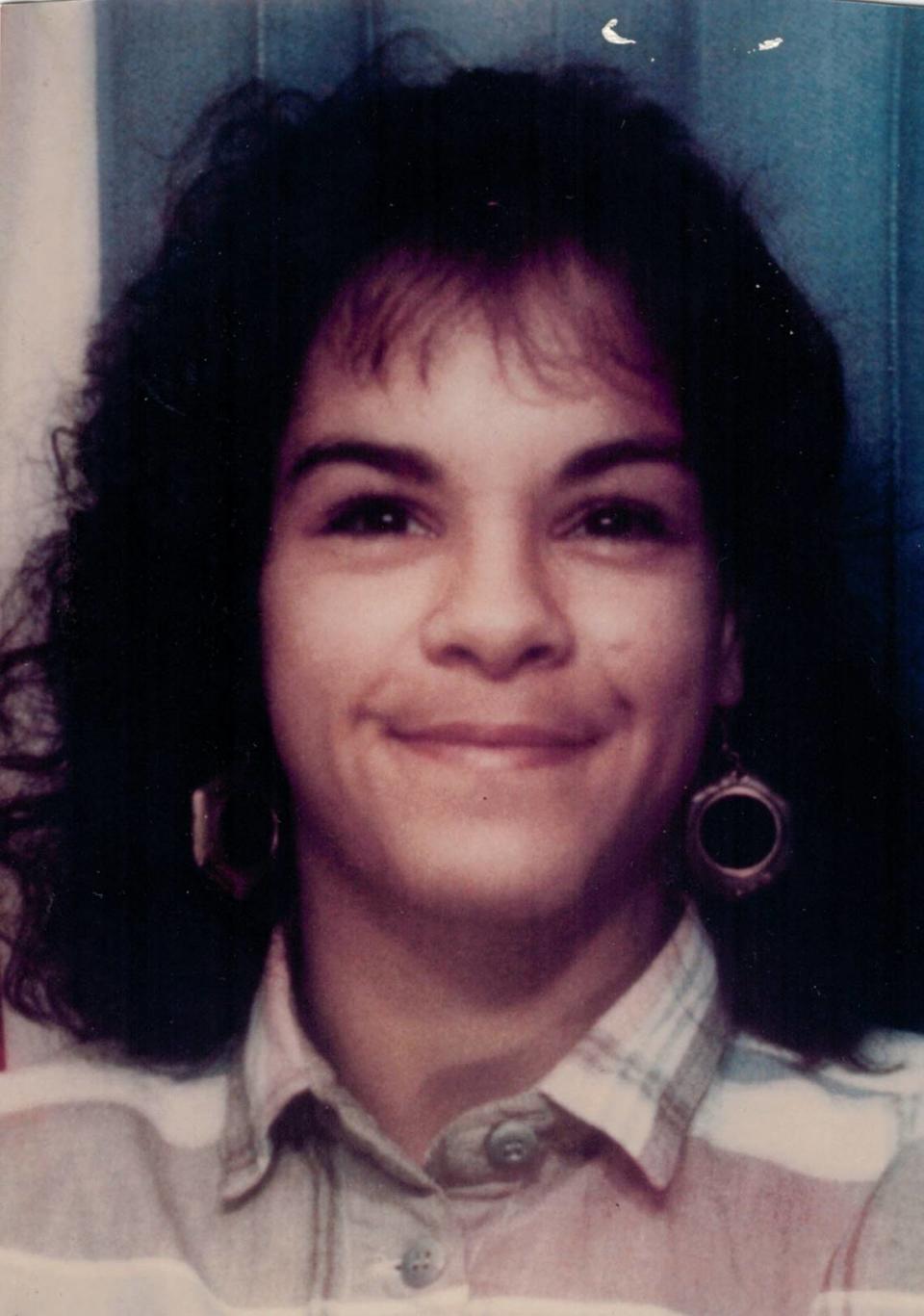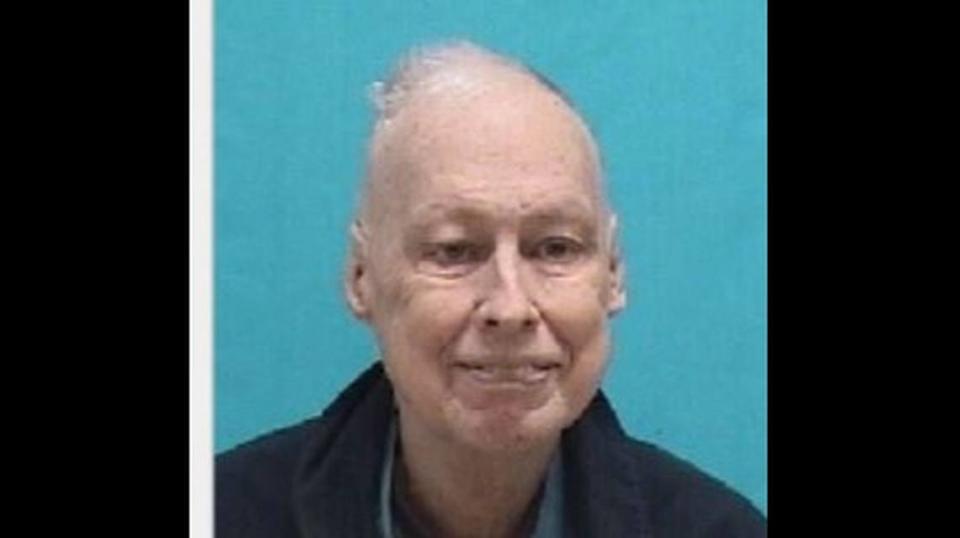Dale Anderson was convicted of two metro-east murders, but many connect him to another
On Sept. 27, 1988, the day before Rodney Woidtke was sentenced in the slaying of Belleville News-Democrat intern Audrey Cardenes, John Lanman arrived at his home near Belleville to find his wife and 3-year-old son murdered.
To date, there is no physical evidence that connects the two crimes, but the continued investigation by local media and a career FBI criminologist led to courtroom intrigue and Woidtke’s eventual exoneration.
To some, there is a common denominator that connects bridges to the two crime scenes: Dale Anderson.
Anderson, who died this week while serving a life sentence for the murder of Jolaine and Kenneth Lanman, “was obsessed” with Cardenes’ murder and, in fact, attempted to frame his supervisors at the Illinois Department of Public Aid for it.
Who killed Cardenas may never be known with any certainty. But here is a timeline of the circumstances, people and arguments that have bound the two crimes together:
June 19, 1988 — Belleville News-Democrat reporting intern Audrey Cardenas was last seen alive. Cardenas, a College Station, Texas, native, had moved into Belleville only 10 days earlier.
June 26, 1988 — A custodian for Belleville Township High School East discovered Cardenas’ remains in a dry creek bed near the school’s parking lot. Decomposition kept the medical examiner from determining the cause of death. Findings indicated she did not die from a blow to the head.
The same day, police found Rodney Woidtke walking inside the cordoned-off crime scene area. He was unresponsive and carrying a knapsack containing personal items, including letters about his sexual fantasies. Woidtke first denied involvement in the crime, but said he spent time in Alton Mental Health Center and heard voices. A detective questioned his sexual preference and he got upset, saying he did not want to become a homosexual. Woidtke made three conflicting confessions: first saying he hit Cardenas in the head with a pipe; then recanting; then saying he didn’t hit her and that she was alive when he left her; then saying he hit her three or four times.
July 1988 — Psychologist Daniel Cuneo diagnosed Woidtke as being a paranoid schizophrenic who claimed to have sex with Cardenas so police would not think he was a homosexual. Cuneo said when Woidtke gave the inconsistent statements to police, he was hallucinating, actively schizophrenic, delusional and unmedicated.
Aug. 16, 1988 — Woidtke was charged with Cardenas’ murder. Because he was indigent, the court appointed assistant public defender Brian Trentman to represent him. However, on Cuneo’s recommendation, Woidtke was found unfit to stand trial.
December 1988 - Dale Anderson was found guilty of disorderly conduct and sentenced to 30 days in jail, one year of mandatory psychiatric treatment. He was convicted of waving a gun during an interview with Belleville News-Democrat reporter Carolyn Tuft the previous June.
July 1989 — Cuneo determined Woidtke to be fit to stand trial following a year of medication and therapy at Chester Mental Health Center.
Aug. 25, 1989 — After four days of testimony, St. Clair County Associate Judge Richard Aguirre convicted Woidtke of murdering Cardenas. Woidtke’s own incriminating statements were the strongest evidence. No physical evidence tied Woidtke to the killing.
Sept. 27, 1989 — John Lanman returned home from work about 5 p.m. to find his wife, Jolaine, who was four-months pregnant, and toddler son dead. They both had been beaten, stabbed multiple times and a pair of scissors was protruding from his wife’s neck.


Sept. 28, 1989 — Woidtke was sentenced to 45 years in prison. Meanwhile, police searched for a blue station wagon belonging to Anderson because it was seen near the Lanman home in the Villa Madero subdivision on the day of the murders. The Major Case Squad of Greater St. Louis also was granted a search warrant to go into Anderson’s home.
Sept. 29, 1989 - Armed police surrounded the Anderson home at 34 Bedford Drive as investigators searched the house and interrogated Anderson. After 15 hours, with a crowd of curious neighbors gathered behind barricades outside, Anderson was arrested. The neighbors applauded as Anderson was led outside. Inside the house, police found six briefcases containing surgical gloves, knives, blunt metal instruments and pieces of rope. They also recovered a cache of weapons and ammunition along with newspaper articles on another murder and political corruption.
Oct. 2, 1989 — Woidtke filed his own petition asking that his conviction be overturned because the Lanman murders were similar to Cardenas’ murder. The court appointed Trentman to represent Woidtke in the petition, but Trentman never filed a supplemental petition detailing the similarities between the murders.

Oct. 29, 1989 - A St. Clair County grand jury indicted Anderson on two counts of first-degree murder in the deaths of Jolaine and Kenneth Lanman. Judge Jerry Flynn refused Anderson bail he posed a threat to his three former supervisors at the Illinois Department of Public Aid, where he had been a caseworker for eight years prior to being fired in August of that year. Anderson tried to implicate the three supervisors in Cardenas’ murder through a note found in the Lanman home. Investigators, at the time, said they believe Anderson coerced Jolaine Lanman into writing the note. It claimed the three supervisors had beaten her and “bragged about killing Audrey Cardenas.” It also listed the license plate numbers of two cars owned by the Illinois Department of Public Aid. It also was revealed that, in addition to being stabbed, Lanman had been hit with a blunt object and had a length of rope around her neck.
Dec. 7, 1989 - John English, a special prosecutor assigned to investigate possible connections between the Lanman and Cardenas murders, said he found none.
Jan. 5, 1990 - In his first interview since being arrested, Anderson told the BND “I am innocent. I never did anything to harm Mrs. Lanman or her child. Anybody who knows me knows I wouldn’t murder anyone or do anything to bring shame or disgrace to my family.” He also asked that the newspaper use a picture of him in a suit and tie instead of the orange jumpsuit issued by the St. Clair County Jail. “It makes a negative impression if you see someone in a jumpsuit,” he said. “It doesn’t present me in a favorable light.”
Feb. 9, 1990 - Judge Flynn granted Anderson’s request for a change of venue. Attorney Gary Bement argued that publicity the case had generated would prejudice a jury in St. Clair County. While Flynn agreed to move the trial to Randolph County, he denied Bement’s petition to withdraw as attorney because Anderson had complained about the way he was handling the case. In a letter to the court, Anderson complained that Bement didn’t meet with him often and that he failed to provide him certain records he had asked for, including police reports from the murder of Cardenas.
March 26, 1990 - Jury selection begins in Anderson’s double-murder trial. Prior to jury selection, Anderson appeared to be considering an insanity defense. A psychologist evaluated Anderson and found he had a paranoid personality disorder. In the meantime, Assistant State’s Attorney Dennis Hatch said he intended to seek the death penalty.
March 28, 1990 - Opening arguments in Anderson’s double-murder trial begin. Hatch argued that the Lanman murders were part of Anderson’s plot to frame his former bosses for Cardenas’ murder and that he had to rush before Woitke was sentenced. Bement called the theory “a fantastic story” that was unbelievable.

March 29, 1990 - John Lanman testified about finding the body’s of his wife and 3-year-old son. He said he found his wife concealed beneath a blanket hanging over the edge of the bed. Trying to maintain his composure, he described pulling his wife’s body from under the bed and seeing the scissors sticking out of her neck. “After finding her, I became very concerned about my child.” He choked out the final words of his testimony, telling the court he said he had never met Anderson. He broke into sobs when prosecutors showed pictures of Jolaine and Kenneth Lanman before and after the killing. Three of Lanman’s neighbors also testified to seeing Anderson in their neighborhood on the day of the murders. One of them said she went to the Lanmans’ door between 4 and 4:30 p.m. to invite Jolaine to go for a walk and thought she heard a child scream.
March 30, 1990 - One of the supervisors at the Illinois Department of Public Aid that Anderson attempted to frame, Maurice Vale, testified about problems they had with Anderson’s work performance. “The bottom line (is) he was not giving service to people who deserved it,” he said. Records from cases Anderson was working were discovered missing in May 1988, he testified. When supervisors asked Anderson to open his briefcase to see if the records were inside, Anderson filed disorderly conduct charges against them. “From there,” Vale said, “I think he was relieved of his duties.”
March 31, 1990 - Belleville Police Sgt. Mark Heffernan testified that Anderson sought battery and theft charges against his three bosses for allegedly pushing him and taking his briefcase and $800. He also said Anderson complained that the three harassed him over the phone and threatened to kill him and his family. The three were arrested, but the charges were dismissed.
April 5, 1990 - Acquaintances testified that Anderson told them he knew who killed Cardenas. One of them said Anderson told him Cardenas had interviewed him and was preparing a story for the newspaper that would show his bosses’ involvement with her murder.
April 10, 1990 - Anderson took the witness stand in his own defense, refuting testimony about his job performance by his supervisors. He said they were “angry and upset and humiliated” by the disorderly conduct charges he filed against them. Anderson’s wife, Linda Anderson, testified that she stayed home from work and their three children stayed home from school for two days after the Lanman murders.
April 12, 1990 - In his second day on the stand, Anderson said that on the day of the murders, he worked to straighten up his garage, put oil and antifreeze in his car and otherwise left the home only to shop for tires in downtown Belleville. He also refuted, tearfully, testimony his wife had given earlier that he covered the home’s windows with cardboard on the day of the crime. A neighbor and friend of Anderson’s daughter testified that she was at the Anderson home at 3 p.m. and didn’t see Dale Anderson until he drove into the driveway at about 5 p.m. The 14-year-old also said Anderson made her write a letter to the court saying she was at his home when Cardenas interviewed him about the allegations of fraud by Anderson’s supervisors. The note said Cardenas said the three men threatened to kill her. The girl testified in court that she never saw Cardenas and didn’t witness the interview.
April 18, 1990 - After more than three weeks of testimony it took the jury of five men and seven women just two hours to find Anderson guilty of murdering Jolaine and Kenneth Lanman. Anderson looked down, pursed his lips and swallowed, but otherwise showed little emotion. Bement said he would appeal while Hatch appealed to the jury to administer the death penalty.
April 20, 1990 - The jury voted 11-1 in favor of recommending that Anderson be sentenced to death by lethal injection. A unanimous vote was required for a death sentence. John Lanman was satisfied. “He’s at some place where he can’t do it again,” he said. “There’s no sense in getting worked up about him not getting the death penalty. The revenge part is not there for me.”
May 10, 1990 - Judge Flynn sentenced Anderson to life in prison without parole. Anderson used his time before the court to reassert his innocence and blame his attorney for the verdict.
June 6, 1990 - Anderson formally filed to appeal his conviction with the Fifth District Appellate Court in Mount Vernon. A different public defender was appointed.
June 17, 1990 - In an interview from prison, Woidtke said he had hoped Anderson would confess to murdering Cardenas. “I don’t know whether Dale Anderson did it or not, but he’s as guilty as I could be. I don’t think in my case they proved I killed anybody.”

June 25, 1990 - Texas driver Lloyd Wayne Hampton, who had confessed to murdering an elderly man in Troy, contacted the Belleville News-Democrat and told a reporter that Anderson reached out to him for help. In a letter, Anderson said he would “do whatever he can” to help Hampton if he would take the blame for the Lanman murders too.
Aug. 14, 1990 - A state appeals court upheld the guilty verdict against Anderson for waving a gun at a BND reporter in 1988.
July 1992 — Woidtke filed another petition stating errors were made in his trial and that Trentman’s defense was ineffective. He asked for a different attorney. The following month, the court appointed Trentman to represent him.
Dec. 2, 1992 - The Fifth District Appellate Court in Mount Vernon upheld Anderson’s conviction in the murder of Jolaine and Kenneth Lanman.
March 23, 1998 — Ron Jenkins became Woidtke’s attorney after Trentman was elected state’s attorney for Washington County.
May 5, 1998 — Jenkins added to Woidtke’s 1992 petition for a new trial, arguing that new evidence showed Anderson killed Cardenas, that Trentman was an ineffective defense attorney and had a conflict of interest because he was representing Anderson at the same time on a misdemeanor charge.
April 14, 1999 — Aguirre rejected Woidtke’s bid for a new trial, saying his defense had been adequate and that Trentman did not have a conflict by representing Woidtke and Anderson at the same time.
1999-2000 - Carolyn Tuft, a journalist who covered the Cardenas and Lanman murders for the BND, published a series of articles for the St. Louis Louis Post-Dispatch connecting Anderson with Cardenas’ slaying. She cited the late Robert K. Ressler, a former FBI expert, who suspected Anderson in the killing as well as four other high-profile slayings involving young women in the metro-east. They included Elizabeth West, Ruth Ann Jany, Eulalia “Lolly” Chavez (known then only as the Summerfield Jane Doe), and Kristina Povolish. Investigators in Cardenas’ murders maintained their believe that Woidtke was the killer, but the articles influenced an eventual retrial.
A third suspected murder, Gregory Bowman, was found guilty in the murders of Jany and West, but the conviction was overturned do to the circumstances under which Bowman provided information to police. While being bonded out for a retrial, DNA evidence connected Bowman to the rape and strangulation of Velda Joy Rumfelt in St. Louis in 1977. Former Belleville Police Chief and investigator James Rokita said he believed Bowman had other victims. Bowman died in jail while waiting on Missouri death row in 2016.
April 26, 2000 — The Fifth District Appellate Court in Mount Vernon overturned Aguirre’s ruling from 1999. The justices found that Trentman should not have represented both Woidtke and Anderson. They also found that Aguirre should have held a hearing on the new evidence Woidtke’s lawyers produced in the case. The Appellate Court threw out Woidtke’s conviction and ordered a new trial.
December 31, 2000 - Understanding that Woidtke’s attorney will make him a suspect in the Cardenas murder in the new trial, Anderson told the BND that he’ll testify that he did not kill the reporter.
April 24, 2001 - St. Clair County State prosecutors rejected a theory by Rodney Woike’s defense attorney that connected Anderson to the murder of Cardeneas.
“Dale Anderson was obsessed with the Audrey Cardeneas murder, but there were also a number of other people obsessed with the murder,” an assistant state’s attorney argued. “The (Lanman and Cardenas) crime scenes were so radically different that no reasonable person can believe that Dale Anderson committed this murder.”
Jan. 5, 2001 - St. Clair County State’s Attorney Robert Haida refused to grant immunity to Anderson for his testimony at Rodney Woidtke’s retrial in the murder of Cardenas.
Anderson refused to testify in a hearing and invoked his constitutional rights under the Fifth Amendment not to incriminate himself. Defense attorneys for Woidtke think Anderson’s testimony could exonerate Woidtke, a former mental patient.
Jan. 17, 2001 - St. Clair County Associate Judge Stephen Rice filed a ruling prohibiting Woidtke’s defense from even suggesting that Anderson, or anybody else, killed Cardenas.
Jan. 26, 2001 - A jury is seated and opening arguments begin in Woidtke’s second trial for the murder of Cardenas.
Jan. 30, 2001 - Judge Rice declares a mistrial and orders new pre-trial hearing for another new trial.
March 22, 2001 - The second attempt at Woidtke’s retrial begins with a new jury.
March 27, 2001 - New DNA evidence shows Woidtke didn’t have contact with Cardenas, an Illinois State Police forensic scientist testified.
March 29, 2001 - The jury hears Woidtke’s taped confession as prosecutors point out inconsistencies between what he said and other evidence gathered from the creek where Cardenas’ body was found.
March 30, 2001 - Woidtke declines to take the stand and the jury begins deliberations.
March 31, 2001 - After serving 13 years in the Illinois State Prison system, Woidtke is acquitted in his retrial and released from jail. He went back to Roseville, California with his brother and sister-in-law.
November 30, 2001 - St. Clair County circuit clerk’s office received mail with “death by anthrax” scrawled in blocky letters. It was sent by Anderson from prison. As a result of the threat, Anderson was segregated from the rest of the prison population. He was moved from Menard Correctional Facility in Chester to Joliet Correctional Center and, eventually to Pontiac Correctional Center, where he died.

